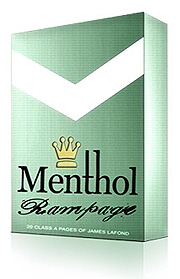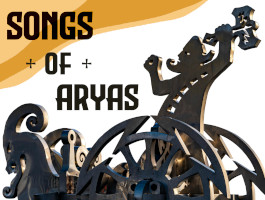In the early days of Modern Agonistics, when we did not spar, but only fought, fought a lot, so much so that it retarded our development, we used I to 1.5 inch thick sticks, including oak and ash and soon realized that we’d be breaking more than fingers if we did not use a lighter stick. We eventually settled for a ¾ inch thick stick as something that wasn’t going to break legs or arms, just ribs and fingers. Eventually, as the heavier sticks were used for bag and post work and set drills our power improved to the point where we had to go down to ½ inch thick sticks to avoid debilitating breaks although they were still delivering concussions.
In recent years, we’ve taken the logical course of mimicking boxing sparring methods to the inevitable conclusion espoused by old Spanish fencers, “Practice slow, learn quick,” and we are doing slow, low-impact sparring until the last round and then picking up the tempo.
Erique and I have recently added two heavy stick sets, a double stick and a saber style set with 1.5 inch thick sticks. This has been very instructive, with the relaxed mid and slow motion permitting real time self-evaluation.
Recently, sparring with Brian and our new man, the Leveler, they were both tight, maintaining fair to good control but still tensing when being scored on and diverting energy to static tension methods from their grappling and Gung Fu base arts. This is actually a form of subconscious self-criticism that is always apparent in the formative stages of an intelligent fighter’s development. The tendency for thinking men to overthink and fixate in sparring crops up even in slow sparring.
So I tried something new with Brian while The Leveler videoed the sparring as in instructional for both men to work on while I am on the road.
I broke out extra heavy sticks, one a full 2 inches thick and the T-ball bat.
Since I was working with two men who had achieved light touch control in handling light sticks [this is not as easy as it sounds as the opposing muscles must be developed] I reasoned that this weapon upgrade would shock the one I had selected for the experiment—Brian—into achieving a more relaxed state.
The experiment was successful, with my partner still developing some tension responses, but generally moving more fluidly with less reliance on a quick defensive beat or counter from the wrist, especially with him handling the extra heavy stick and I the quick reacting T-ball bat, which makes sense as the stick was too heavy too stroke from the wrist [as will be most improvised weapons] and even his subconscious would understand that there was no sense in trying to out speed the hollow aluminum club.
The extra heavy weapon sparring should be limited to the end of the session, after the rhythm and tempo has been established. Handling such heavy weapons also helps prepare for handling defensive tools that one might pick up by happenstance in a survival situation.
Being a Bad Man in a Worse World
Fighting Smart: Boxing, Agonistics & Survival
Twerps, Goons and Meatshields: The Basics of Full Contact Stick-Fighting
link › jameslafond.blogspot.com











